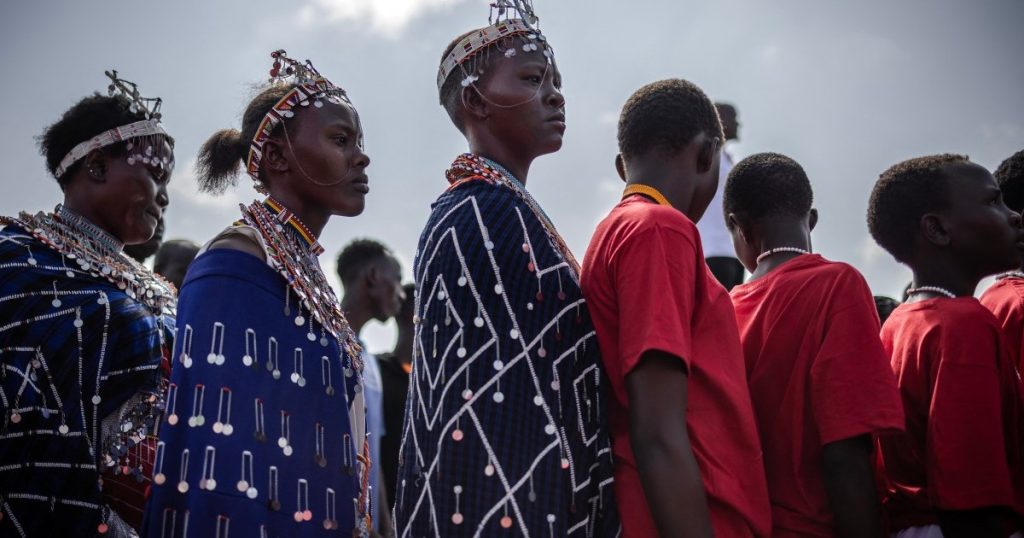The Maasai Olympics, a vibrant reimagining of a traditional coming-of-age ceremony, unfolds against the backdrop of the Kenyan savanna. Originally known as “Olamayio,” this rite of passage was traditionally a male-dominated affair, focused on proving strength and attracting potential mates through the hunting of a lion. However, recognizing the evolving needs of their community and the imperative to protect their dwindling lion population, Maasai leaders, in partnership with the Big Life Foundation, transformed this age-old tradition into a sporting competition in 2012. This shift replaced the dangerous and ecologically detrimental practice of lion hunting with a celebration of athletic prowess, simultaneously embracing the participation of young Maasai women. The scene now bursts with the energy of hundreds of spectators cheering on the young athletes as they compete in various track and field events, a far cry from the solitary hunt of the past.
The inclusion of women in the Maasai Olympics marks a significant cultural shift, empowering young women like Valentine Naisimoi, a 19-year-old aspiring athlete. Naisimoi articulates the limited opportunities traditionally afforded to Maasai women, often confined to domestic roles and expectations of marriage. The Olympics, she emphasizes, provides a platform for these women to showcase their talents and challenge traditional gender roles. This sentiment resonates with many young women in the community who yearn for greater agency and recognition beyond the confines of societal expectations. The spirit of the games, with its emphasis on individual achievement and healthy competition, fosters a sense of hope and encourages them to pursue their dreams, inspiring them to strive for more than what tradition dictates. This newfound platform offers a glimpse into a future where Maasai women can actively shape their own destinies and contribute more meaningfully to their community.
The games themselves are a fascinating blend of traditional Maasai culture and contemporary athletics. The participants, numbering 160, including 40 women, engage in a variety of running events, ranging from sprints to long-distance races. The events also incorporate unique elements of Maasai culture, such as the “rungu” throw, where athletes compete in tossing traditional wooden clubs used for warding off hyenas into a basket. While women’s participation is currently limited to the 100 and 1,500-meter races, organizers, acknowledging the growing demand for inclusivity, are actively working to expand the range of events open to female competitors. This gradual expansion reflects the ongoing dialogue within the Maasai community about the role of women and the importance of providing them equal opportunities.
Samuel Kaanki, a Maasai coordinator instrumental in organizing the games, highlights the community’s growing recognition of the need for greater female participation. He emphasizes the numerous inquiries he receives from women eager to join the competition, underscoring the changing attitudes within the community. The Maasai Olympics is not merely a sporting event; it’s a reflection of the community’s evolving values and its commitment to empowering its women. This shift towards inclusivity signifies a broader recognition of the vital role women play in the future of the Maasai community and the importance of providing them with the same opportunities for growth and recognition as their male counterparts.
Beyond its cultural significance, the Maasai Olympics serves a crucial conservation purpose, stemming from the alarming decline of the lion population in the region. In the 1970s, an estimated 30,000 lions roamed the Kenyan savanna, a number that plummeted to a mere 2,000 by the turn of the century. Recognizing the devastating impact of lion hunting on the ecosystem, community leaders collaborated with the Big Life Foundation to develop a sustainable alternative to the traditional lion hunt as a rite of passage. The Maasai Olympics emerged as a solution, redirecting the energy and focus of young Maasai warriors towards athletic competition and away from the destructive practice of lion hunting.
The results of this initiative have been remarkable. The lion population in the Amboseli ecosystem, once precariously low, has rebounded to over 250, a testament to the success of the Maasai Olympics in fostering conservation efforts. This success story highlights the power of community-driven initiatives and the importance of adapting traditions to address contemporary challenges. The Maasai Olympics stands as a model for how cultural practices can evolve to promote both social progress and environmental sustainability. The story of the Maasai Olympics is more than just a sporting event; it’s a testament to the resilience of a community, its willingness to embrace change, and its commitment to preserving its natural heritage for generations to come. It’s a story of how a tradition, once rooted in hunting, has been transformed into a celebration of life, athleticism, and the empowerment of women.

